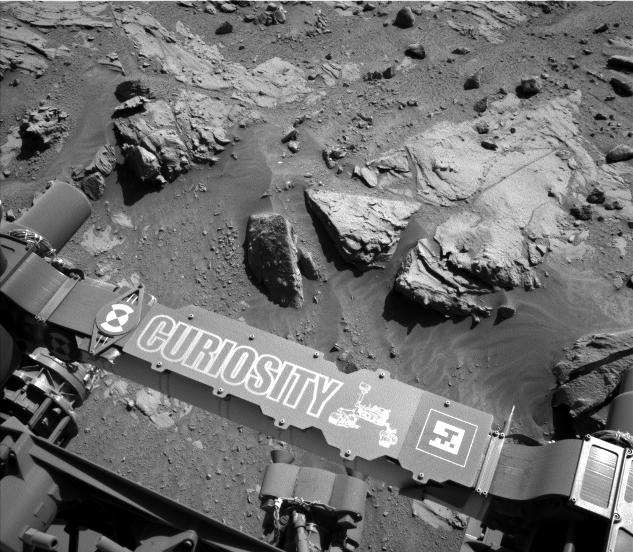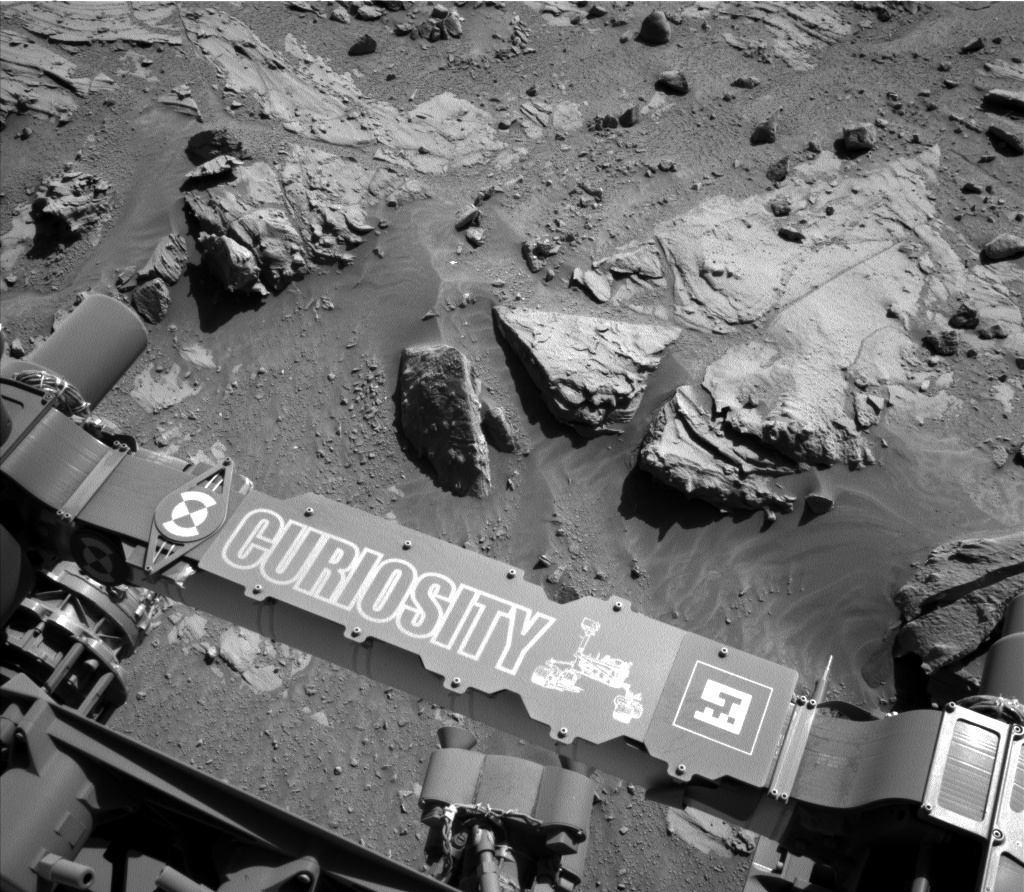Curiosity Mars Rover Beside Sandstone Target ‘Windjana’

| Credit | NASA/JPL-Caltech |
|---|---|
| Language |
|
This image from the Navigation Camera (Navcam) on NASA's Curiosity Mars rover shows a sandstone slab on which the rover team has selected a target, "Windjana," for close-up examination and possible drilling. The target is on the approximately 2-foot-wide (60-centimeter-wide) rock seen in the right half of this view.
The Navcam's left-eye camera took this image during the 609th Martian day, or sol, of Curiosity's work on Mars (April 23, 2014). The rover's name is written on the covering for a portion of the robotic arm, here seen stowed at the front of the vehicle.
The sandstone target's informal name comes from Windjana Gorge in Western Australia. If this target meets criteria set by engineers and scientists, it could become the mission's third drilled rock and the first that is not mudstone.
The rock is within a waypoint location called "the Kimberley," where sandstone outcrops with differing resistance to wind erosion result in a stair-step pattern of layers. Windjana is within what the team calls the area's "middle unit," because it is intermediate between rocks that form buttes in the area and lower-lying rocks that show a pattern of striations.
NASA's Jet Propulsion Laboratory, a division of the California Institute of Technology, Pasadena, manages the Mars Science Laboratory Project for NASA's Science Mission Directorate, Washington. JPL designed and built the project's Curiosity rover and the rover's Navcam.

